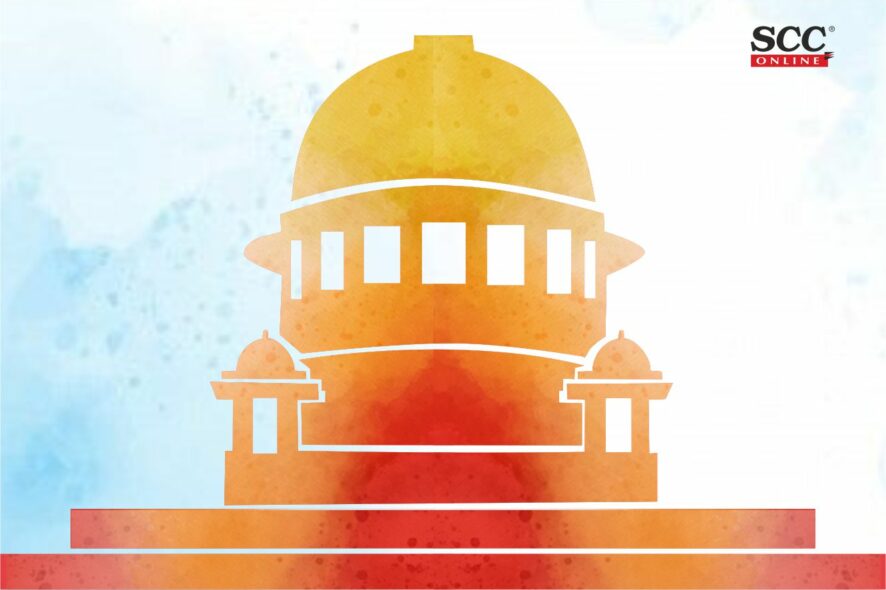Supreme Court: The Division Bench of *Mohan M. Shantanagoudar and R. Subhash Reddy, JJ., addressed the instant case dealing with vexatious complaint. The Bench, while expressing concern over such practises emphasised over the need of scrutinising such complaints at its initiation. The Bench said,
“The Trial Judge has a duty under the Constitution and the CrPC, to identify and dispose of frivolous litigation at an early stage by exercising, substantially and to the fullest extent, the powers conferred on him.”
The fact of the case was that the parties had been at loggerheads from 2006 onwards. It was the case of the respondent that the Appellants came to his house, beat him and his wife with iron rods, and threatened to kill them. Similar counter-allegations were made by the appellants against the respondent. On 05-08-2012, the respondent filed a Non Cognizable Report (NCR) No. 158 of 2012 and the Appellant had filed a counter-complaint as NCR No. 160 of 2012. Later on, the appellant had filed an application under Section 155(2) of CrPC before the Magistrate, almost 5 years after the alleged incident, seeking permission for the police to investigate NCR No. 160 of 2012.
Being unsatisfied with the allegations made and charge sheet filed against him, the Respondent instituted a fresh private complaint against the Appellant under Section 200 of CrPC Complaint Case No. 2943 of 2018 in respect of the very incident that took place on 05-08-2012 regarding which compensation had been already paid by the appellant but the allegations of fraud, injury to bull, forging of affidavit, etc. which were not found in the 2012 complaint were also found in the private complaint.
While criticising the rehashing of same incident in the private complaint given that Appellant had already been convicted for the offence, which was of no relevance to the present case, the Bench cited the judgment of Upkar Singh v. Ved Prakash, (2004)
13 SCC 292, wherein it had been held that, any further complaint by the same complainant or others against the same accused, subsequent to the registration of a case, is prohibited under the Code because an investigation in this regard would have already started and further complaint against the same accused will amount to an improvement on the facts mentioned in the original complaint, hence will be prohibited under Section 162 of the Code.
The same principle would also apply where a person gives information of a non cognizable offence and subsequently lodges a private complaint with respect to the same offence against the same accused person.
“The complainant cannot subject the accused to a double whammy of investigation by the police and inquiry before the Magistrate.”
In Amitbhai Anilchandra Shah v. CBI, (2013) 6 SCC 348, the Supreme Court had held that, that a second FIR in respect of an offence or different offences committed in the course of the same transaction is not only impermissible but it violates Article 21 of the Constitution.
“Permitting multiple complaints by the same party in respect of the same incident, whether it involves a cognizable or private complaint offence, will lead to the accused being entangled in numerous criminal proceedings. As such, he would be forced to keep surrendering his liberty and precious time before the police and the Courts…”
Noticing that as on 05-08-2012, appellant 1 was a 76 year old man and appellant 2 was suffering from epileptic seizures; and appellant 4 was of unsound mind, the Bench opined that there was no equity in allowing them to be dragged into criminal proceedings pertaining to a petty offence, instituted 6 years after the alleged incident. Since, respondent’s conduct in filing a delayed complaint case, suppressing material facts, and utilising fresh proceedings to materially improve on his earlier version, in totality, said the Bench, amounted to gross abuse of the process of court.
Role of the Lower Judiciary in Preventing Abuse of Court Process
The Bench, while expressing concern, remarked,
“This is a case that should not have been allowed to reach as far as this Court.”
The justice dispensation machinery in India is plagued with backlogs and a significant factor in this backlog is the vast mass of frivolous litigation. The Bench stated,
“Curtailing such vexatious litigation is, thus, a crucial step towards a more effective justice system – a step that cannot be taken without the active involvement of the lower judiciary.”
In Subrata Roy Sahara v. Union of India, (2014) 8 SCC 470, the Supreme Court had stated,
“…One needs to keep in mind, that in the process of litigation, there is an innocent sufferer on the other side, of every irresponsible and senseless claim. He suffers long drawn anxious periods of nervousness and restlessness, whilst the litigation is pending, without any fault on his part. He pays for the litigation, from out of his savings (or out of his borrowings), worrying that the other side may trick him into defeat, for no fault of his. He spends invaluable time briefing counsel and preparing them for his claim. Time which he should have spent at work, or with his family, is lost, for no fault of his…”
Lastly, the Bench stated, the Magistrates are the first lines of defence for both the integrity of the criminal justice system, and the harassed and distraught litigant. And a litigant pursuing frivolous and vexatious proceedings could not claim unlimited right upon court time and public money to achieve his ends.
Hence, the Bench quashed all litigations between the parties arising out of the complained incident by exercising its inherent powers under Article 142 of the Constitution.
[Krishna Lal Chawla v. State of U.P., 2021 SCC OnLine SC 191, decided on 08-03-2021]
Kamini Sharma, Editorial Assistant has put this report together
*Judgment by: Justice Mohan M. Shantanagoudar






